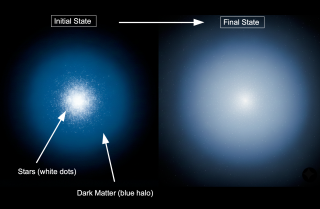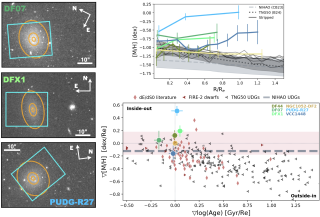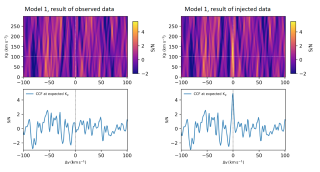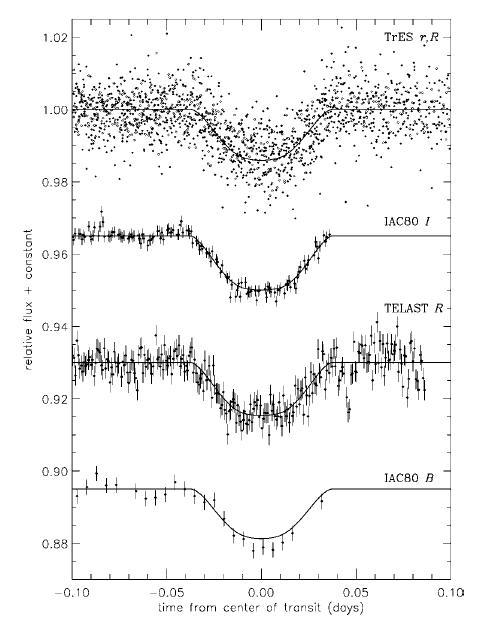In August 2006 a new planetary transit was discovered from data from the TrES network. The discovery was confirmed using radial velocity curves obtained with the Keck and characterised with light curves in different filters obtained using two telescopes at the Observatorio del Teide: "IAC80" and "TELAST" (the first result of scientific interest obtained from the latter). The planet discovered, TrES-2, is more massive and somewhat larger than its quasi-homonym TrES-1 (the first exoplanet discovered using the transit method), and follows the expected patterns for this type of object. Its main importance is that it is the first object discovered in the area of observation of the future Kepler satellite, which will be able to track it in a degree of detail never before achieved.
Light curves of TRES_2 obtained using telescopes of the network and with two telescopes from the Observatorio del Teide: "IAC-80" and "TELAST" with different filters.
Advertised on
It may interest you
-
 Only a handful of observations truly constrain the nature of dark matter, which is why dozens of different physical models are still viable. Several of the most popular alternatives predict that dark matter halos slowly “thermalize” over time, gradually changing shape and expanding until they form a central region of nearly constant density -- a core. This transformation would not occur if the dark matter particles were completely collision-less, as assumed in the standard model. Therefore, the presence or absence of such a core provides a powerful way to distinguish between the standardAdvertised on
Only a handful of observations truly constrain the nature of dark matter, which is why dozens of different physical models are still viable. Several of the most popular alternatives predict that dark matter halos slowly “thermalize” over time, gradually changing shape and expanding until they form a central region of nearly constant density -- a core. This transformation would not occur if the dark matter particles were completely collision-less, as assumed in the standard model. Therefore, the presence or absence of such a core provides a powerful way to distinguish between the standardAdvertised on -
 Ultra-diffuse galaxies, an extreme type of dwarf galaxy, have been the focus of extensive observational and theoretical studies over the past decade. With stellar masses comparable to dwarf galaxies (between 10 7 and 10 9 solar masses) but much larger in size (as defined by their effective radius), they exhibit an extremely low surface brightness. These galaxies display highly diverse properties: some have large dark matter halos, others lack them, and their number of globular clusters varies widely. Studies of their kinematics and stellar populations have shown that these extreme galaxiesAdvertised on
Ultra-diffuse galaxies, an extreme type of dwarf galaxy, have been the focus of extensive observational and theoretical studies over the past decade. With stellar masses comparable to dwarf galaxies (between 10 7 and 10 9 solar masses) but much larger in size (as defined by their effective radius), they exhibit an extremely low surface brightness. These galaxies display highly diverse properties: some have large dark matter halos, others lack them, and their number of globular clusters varies widely. Studies of their kinematics and stellar populations have shown that these extreme galaxiesAdvertised on -
 The rocky planet GJ 1132 b, with Earth-like mass and radius, is a prime candidate for atmospheric studies. Previous observations with Hubble and JWST yielded conflicting results about its atmosphere. This study used three transit observations with the CRIRES+ instrument to search for He i, HCN, CH₄, and H₂O in GJ 1132 b's atmosphere. No clear atmospheric signals were detected, but upper limits for CH₄, HCN, and H₂O were established. The results suggest that if GJ 1132 b has an atmosphere, it is not dominated by hydrogen. The work highlights the challenges of detecting high molecular weightAdvertised on
The rocky planet GJ 1132 b, with Earth-like mass and radius, is a prime candidate for atmospheric studies. Previous observations with Hubble and JWST yielded conflicting results about its atmosphere. This study used three transit observations with the CRIRES+ instrument to search for He i, HCN, CH₄, and H₂O in GJ 1132 b's atmosphere. No clear atmospheric signals were detected, but upper limits for CH₄, HCN, and H₂O were established. The results suggest that if GJ 1132 b has an atmosphere, it is not dominated by hydrogen. The work highlights the challenges of detecting high molecular weightAdvertised on
